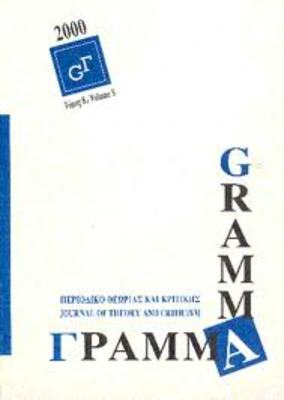Narrating the individual and the community in Elizabeth Gaskell’s Cranford
Part of : Γράμμα : περιοδικό θεωρίας και κριτικής ; Vol.18, No.1, 2010, pages 67-80
Issue:
Pages:
67-80
Section Title:
The self, the community and nation in 18th and 19th century literature
Author:
Abstract:
My reading of Elizabeth Gaskell’s community narrative Cranford (1853) addresses the novel’s idiosyncratic narrative form in terms of how it generates tensions between the individual and the community. Cranford, the text, and Cranford, the place, inform each other mutually through the mediation of Mary Smith, the text’s communal, and thus, liminal narrator. As a narrator, Mary Smith operates in her capacity as an individual, detached observer/ recorder of her narrated world, as a distinct “I” addressing an urban, middle-class audience. As a character, however, she often resorts to the convenient all-inclusiveness of a “we, ” through which she becomes and speaks as part of Cranford’s rural community in an attempt to recompense the text’s characters for her ironic narrative stance and mild aggression. Caught between her dual role and structural positioning as both insider and outsider of the community she depicts, Gaskell’s narrator holds a borderline position of in betweenness, which renders the relation between the “I” and the “we” a deeply conflictuel, but, at the same time, a mutually constitutive and transactional one.
Subject:
Subject (LC):
Notes:
Περιέχει βιβλιογραφία.The individual and the mass: literary and cultural reflections




